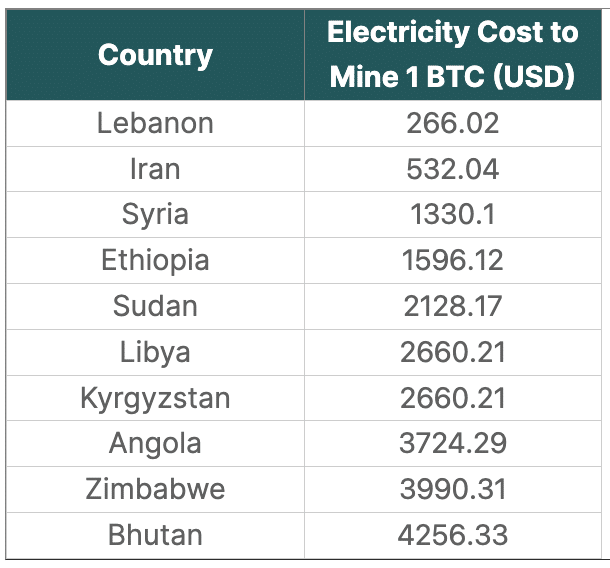Global electricity demand could double over the next three years, largely due to cryptocurrency mining and artificial intelligence. How will cryptocurrency last?
AI and cryptocurrencies accounted for nearly 2% of global electricity demand in 2022, demonstrating the scale of their energy impact. This increase is primarily due to the increasing complexity and volume of computing tasks for artificial intelligence and the continued increase in the number of crypto transactions.
According to a recent report by Bloomberg citing the International Energy Agency, global electricity demand from data centers, cryptocurrencies and artificial intelligence will more than double over the next three years, matching Germany’s overall electricity demand. It is expected to be equivalent.

AI’s growth desire
Artificial intelligence (AI) has become an integral part of modern life, streamlining many aspects. However, there are concerns that widespread integration will result in a significant surge in energy consumption. According to Alex de Vries, a graduate student at the University of Amsterdam Free University, global AI infrastructure could require energy equivalent to that of an entire country.
OpenAI ChatGPT Almost a year has passed since the AI industry entered a phase of rapid expansion with the emergence of AI chatbots. Training and operating neural networks such as those that support this service require particularly energy-intensive processes. Hugging Face, an AI development company and key contributor to large-scale language models, said it required 433 MWh of power to train its platform. This is roughly equivalent to the energy needed by 40 average American households for a year. By comparison, ChatGPT, a more extensive project, consumes approximately 564 MWh per day.
And there seems to be no way out of this situation. Companies around the world are working to improve the hardware and software efficiency of AI systems to make them less energy-intensive. However, increasing the efficiency of these machines will inevitably increase demand for AI services, further increasing resource use. This is a phenomenon known in economics as Jevons’ paradox.
How AI will transform electricity demand
Amid these developments, the most substantive projects raise concerns. According to a paper by Alex de Vries, Google currently processes 9 billion searches every day. Using this information, researchers calculated that if AI were used for all Google searches, approximately 29.2 terawatt hours (TWh) of energy would be needed per year. This figure is similar to Ireland’s total consumption. While de Vries acknowledges that these extreme scenarios may not materialize in the near future, he acknowledges that the expansion of AI servers will contribute to an overall increase in energy consumption. By 2027, cumulative capacity could reach 85 to 134 TWh per year.
This amount is similar to the requirements of large countries such as Argentina, the Netherlands and Sweden. Increasing the efficiency of AI accelerators allows developers to repurpose processors to solve problems related to AI algorithms, which also increases the associated energy consumption.
The future of artificial intelligence, where everyone will have a personal assistant, depends heavily on ensuring access to affordable energy. Otherwise, AI progress could slow down significantly. There is hope for cost-effective energy sources through new energy solutions or innovations such as advances in thermonuclear fusion. Currently, creating the powerful neural networks seen in projects like ChatGPT is a privilege reserved for a few major companies with significant investments, such as OpenAI.
Is cryptocurrency mining profitable?
There are over 8,000 data centers distributed globally, with approximately 33% in the United States, 16% in Europe, and 10% in China. Numbers are growing with more centers in the planning stages. In Ireland, where the data center landscape is expanding, the International Energy Agency (IEA) expects the sector to consume 32% of the country’s electricity by 2026. This is a significant increase from 17% in 2022. There are currently 82 centers in Ireland. 14 are under construction and 40 are awaiting approval.
However, as of July 2023, analysts at CoinGecko noted that Europe is still the least profitable region for mining. Electricity cost data shows that by mid-2023, only 65 countries were considered profitable for individual Bitcoin mining. Europe featured five countries on the list, while the Americas, particularly South America and the Caribbean, offered opportunities in eight countries. In Africa, 18 regions were favorable for mining, and in Asia, 34 countries offered favorable conditions for mining.

At the same time, Bitcoin mining is unprofitable in 82 countries. The top 10 countries with the highest household electricity costs when mining 1 BTC are Italy ($208,560.33), Austria ($184,352.44), Belgium ($172,381.50), Denmark ($166,795.06), Germany ($163,336.79), Ireland ($159,612.50), and Lithuania ($159,61). 2.50 )no see. $152,163.92), Netherlands ($137,798.79), United Kingdom ($130,616.23), and Cayman Islands ($128,222.04).
Electricity demand after halving
The Bitcoin (BTC) halving scheduled for spring 2024 is poised to bring notable changes to mining dynamics.
If the reward is halved, miners will receive fewer Bitcoins for their efforts, so halving has a direct impact on the profitability of mining operations. This could particularly impact miners who face high energy and equipment costs, with some likely to cease operations if they are unable to recoup their costs.
A significant rise in the price of Bitcoin may increase the value of mined Bitcoin, offsetting the decrease in block rewards. Formally speaking, if the price of Bitcoin doubles, individuals may be more willing to invest in electricity costs to increase returns from mining efforts. As a result, electricity demand for mining is likely to increase.
Will the prediction come true?
As new technologies emerge, they naturally require more resources, and electricity is no different. As a result, predictions of increased consumption by both AI and miners seem quite plausible.
But there is a problem. Meeting the growing demand for electricity requires exploring new energy sources, especially renewable energy.
If successful in finding and implementing these new sources, AI and cryptocurrency miners are likely to emerge as significant players in energy consumption.

